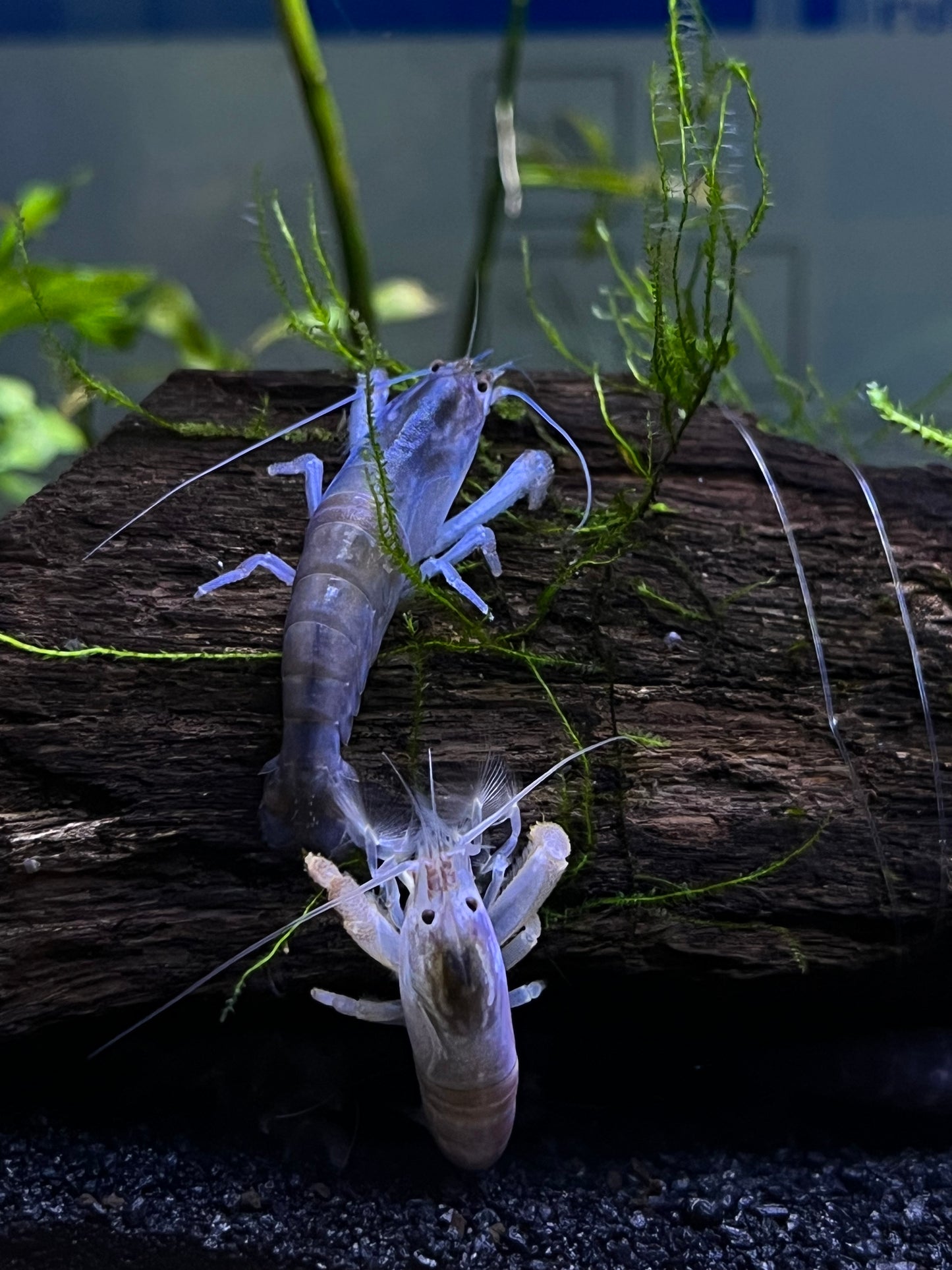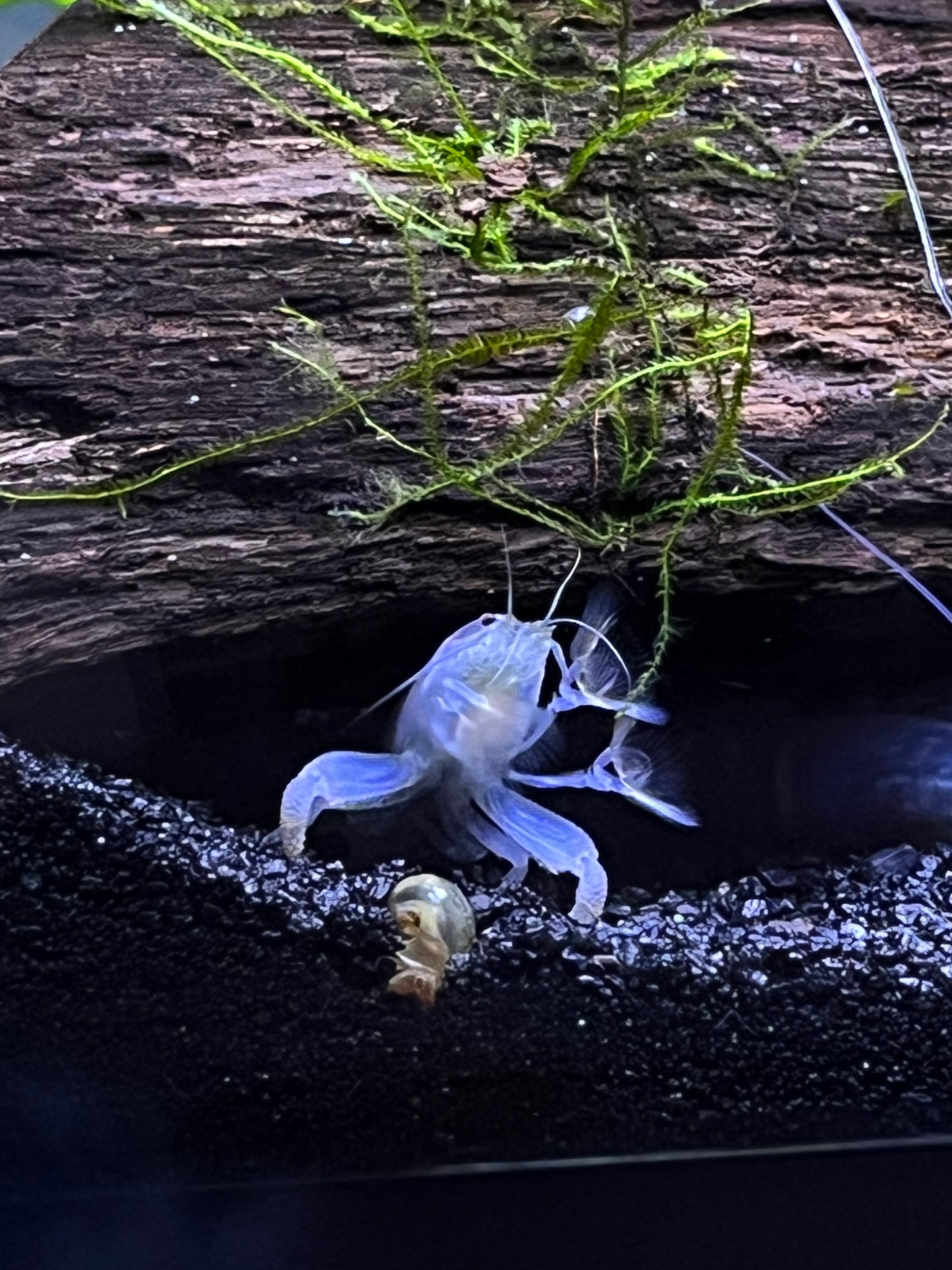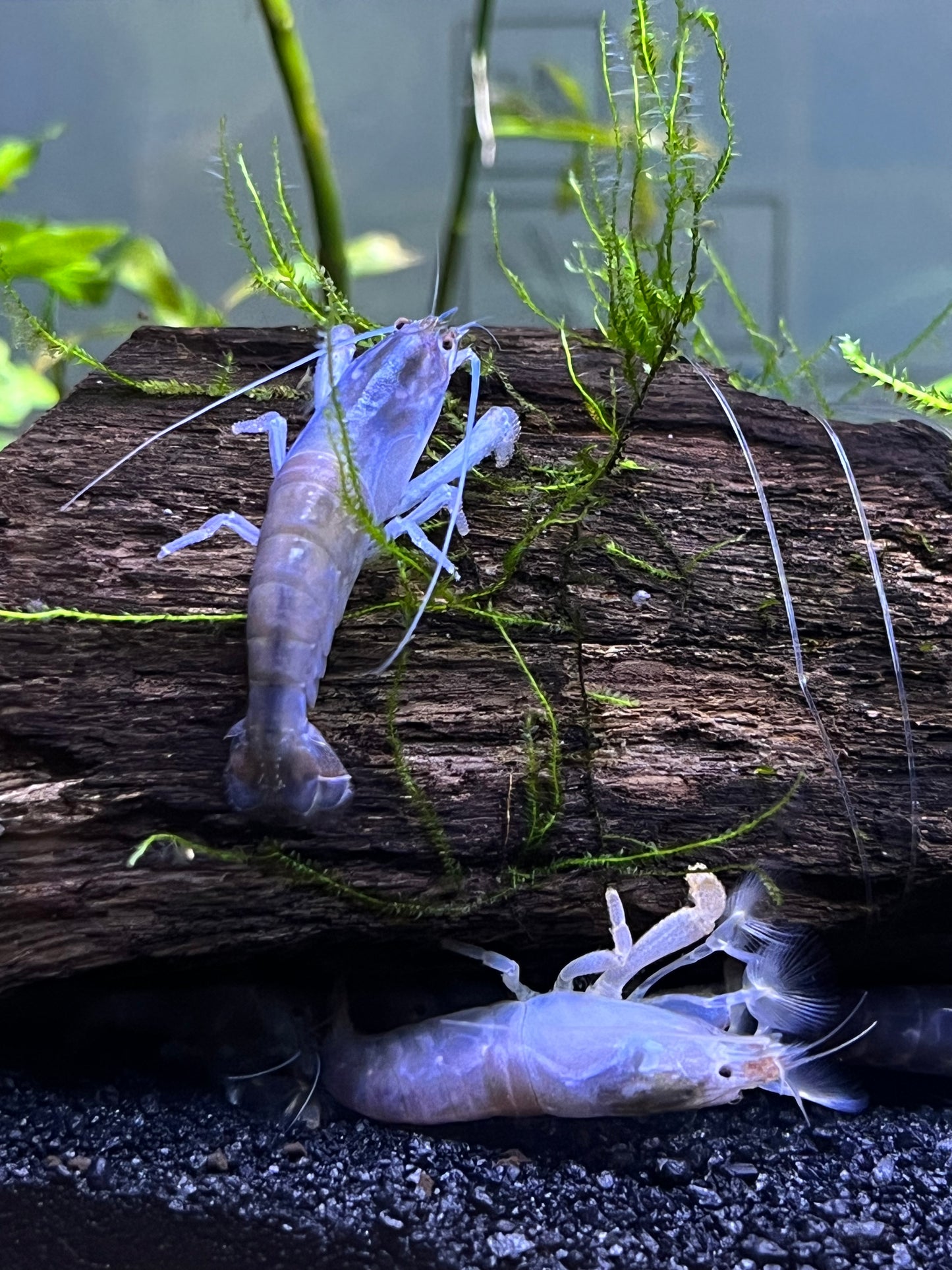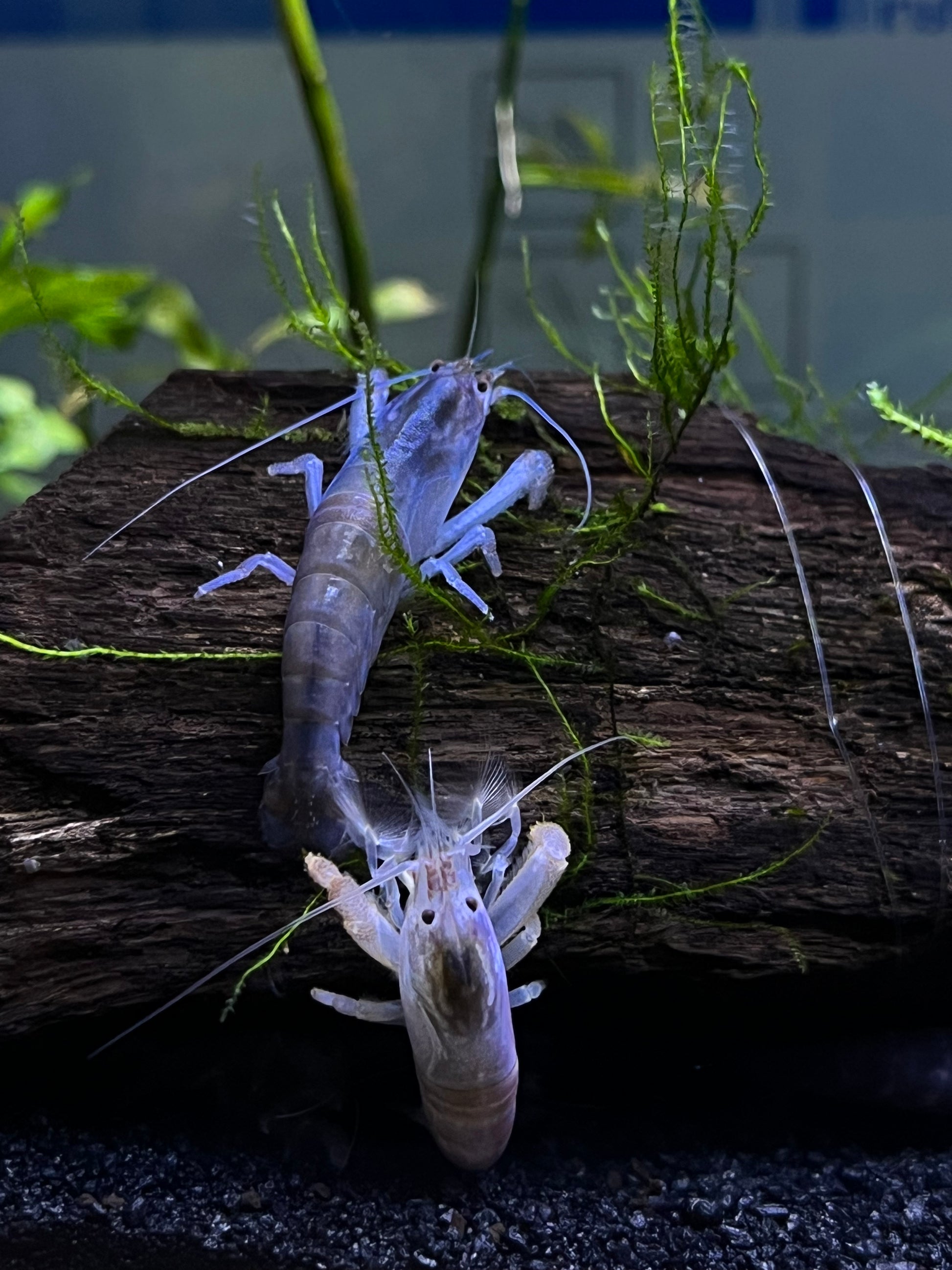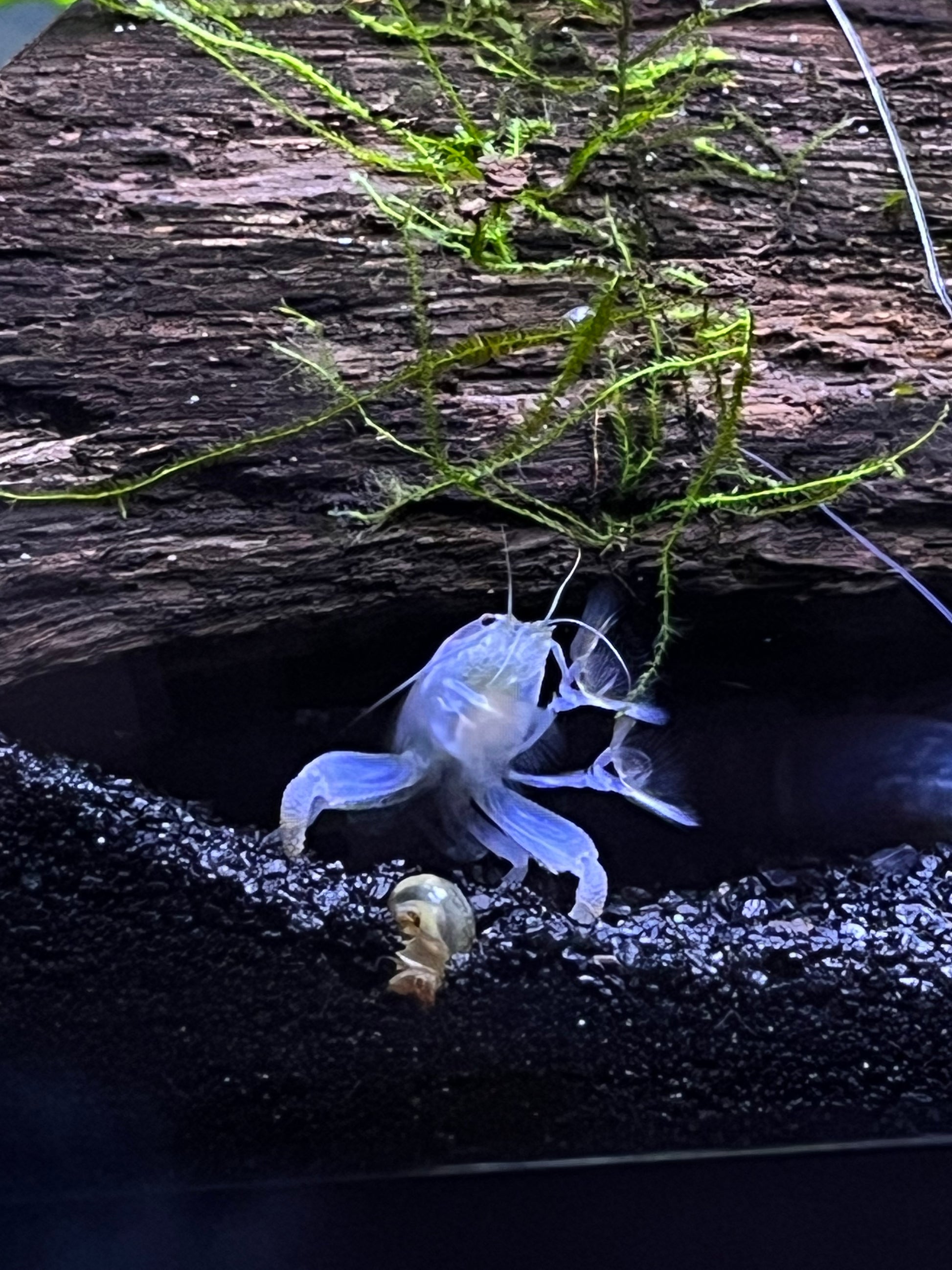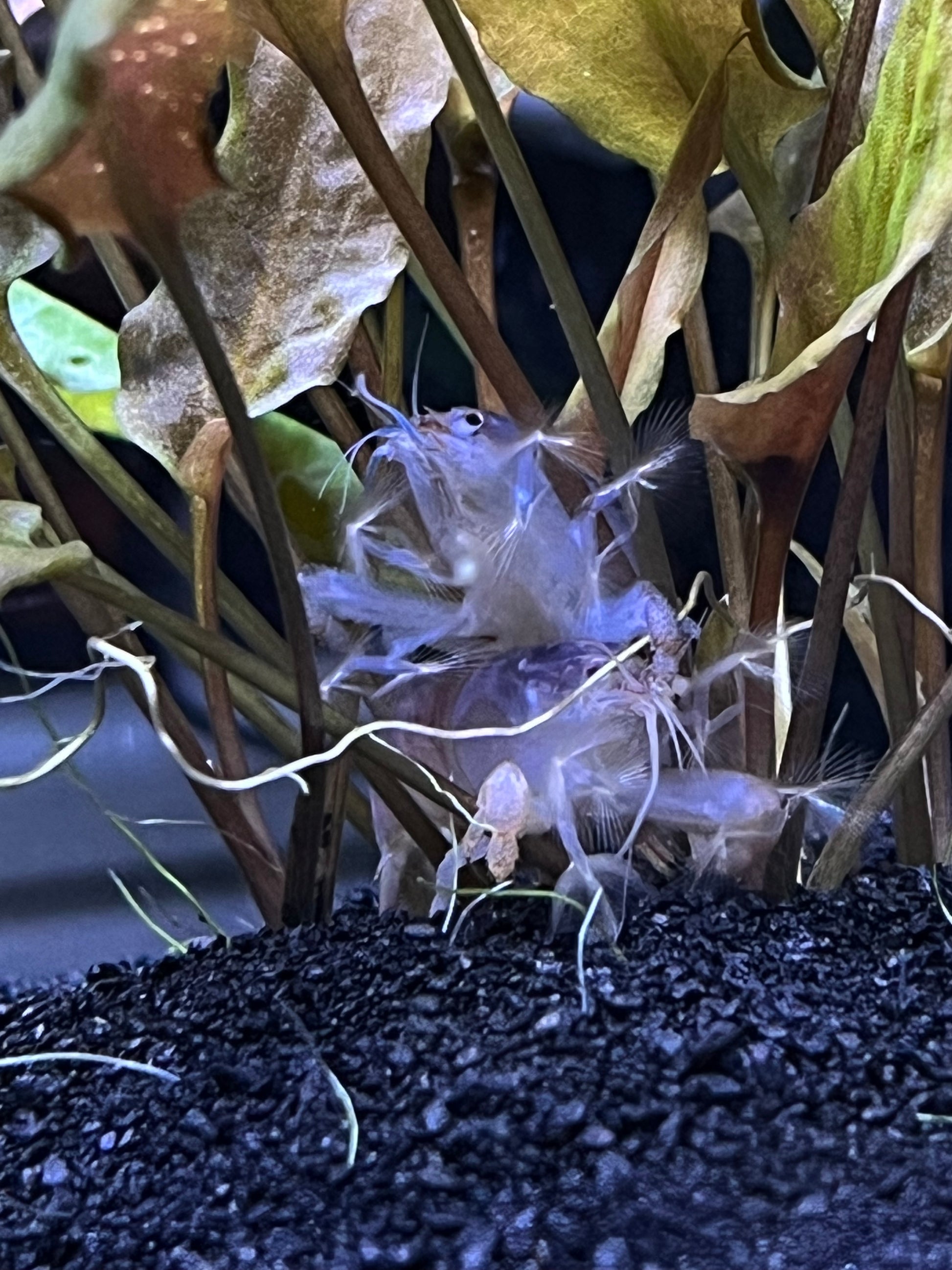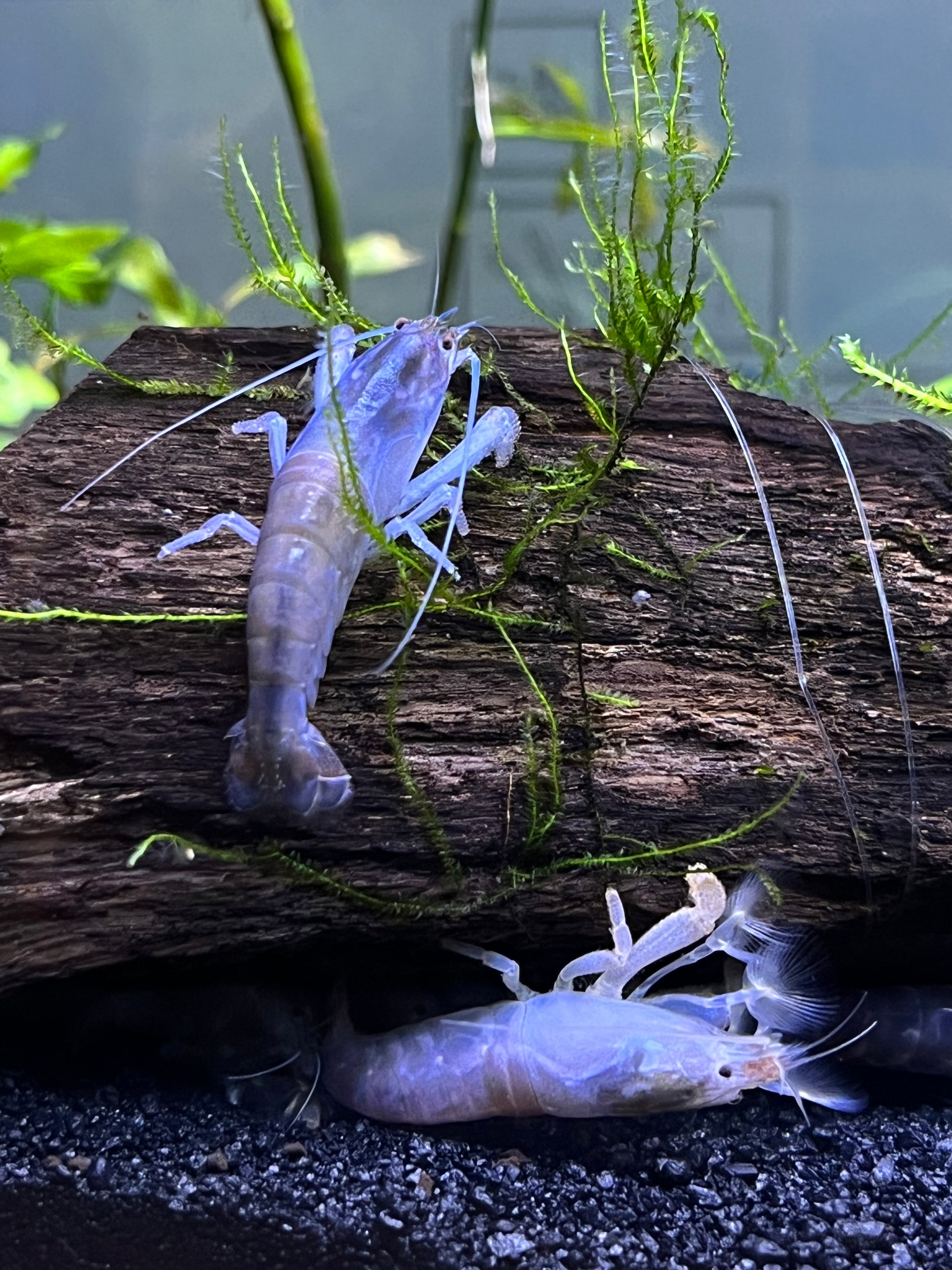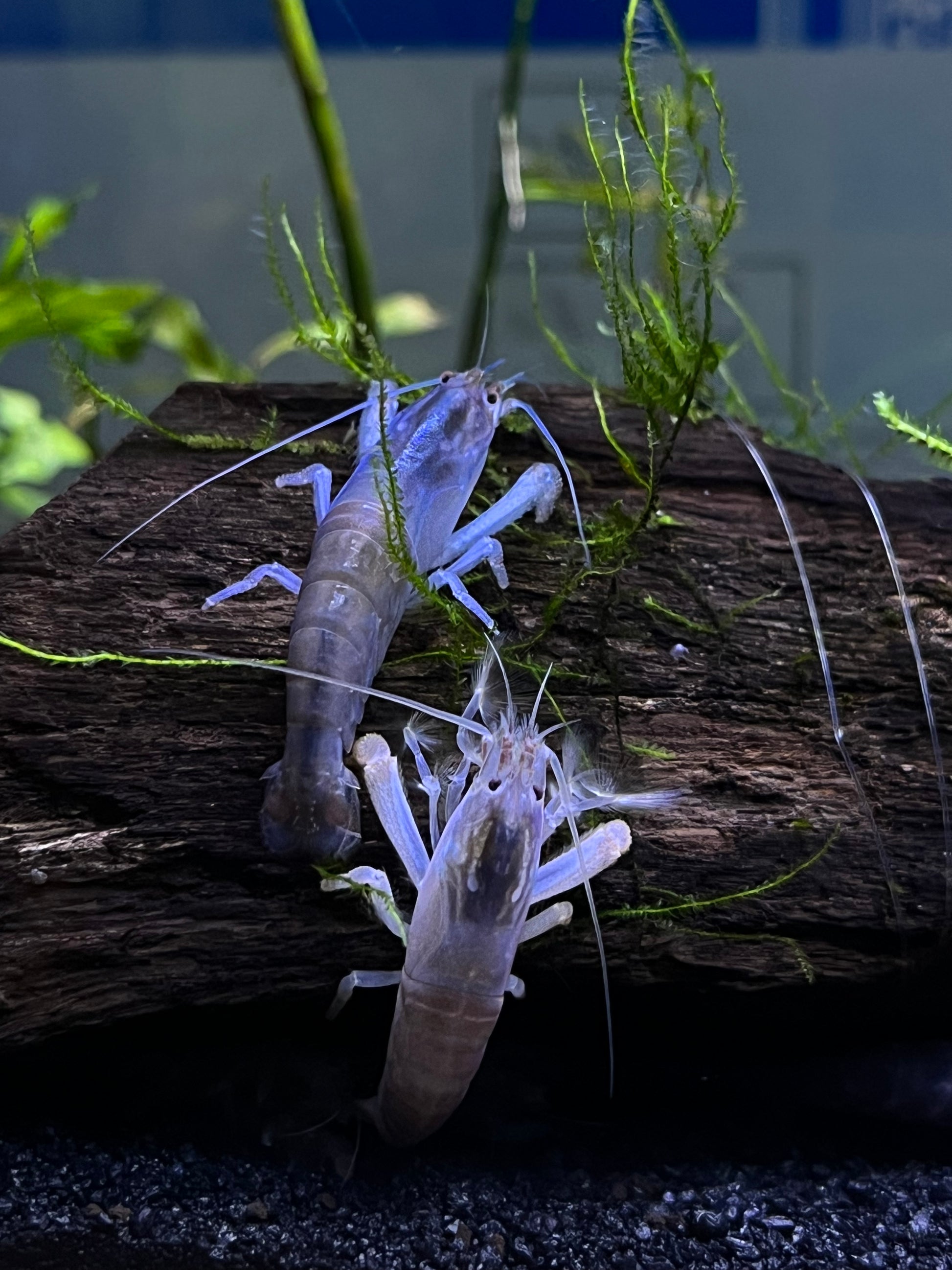YoCamron’s Aquatics
Vampire Shrimp (Atya gabonensis)
Vampire Shrimp (Atya gabonensis)
Couldn't load pickup availability
Vampire shrimp, also known as Atya gabonensis, are fascinating freshwater crustaceans native to West Africa. They get their unique name from their striking appearance, which includes long, branching, and feathery appendages resembling fangs. These shrimp are a peaceful species that can make a captivating addition to a well-maintained aquarium.
Appearance and Behavior:
Vampire shrimp have a distinctive dark brown or blackish body coloration with bright white, yellow, or orange markings. They can grow up to 2.5 to 3 inches (6 to 7.5 centimeters) in length, making them relatively large compared to other freshwater shrimp species. Their fan-like fangs, known as uropods, are used for filter-feeding and also serve as sensory organs. These shrimp are typically nocturnal, and they will become more active during the evening and night hours.
Habitat and Tank Requirements:
Creating a suitable habitat for vampire shrimp is crucial to their well-being. A well-maintained freshwater aquarium with a minimum capacity of 20 gallons is recommended for a small group of vampire shrimp. Provide them with plenty of hiding spots using rocks, driftwood, or plants. Additionally, ensure a soft substrate, such as sand, as they like to burrow in it.
Water Parameters:
Maintaining proper water conditions is vital for vampire shrimp. Aim for the following parameters:
- Temperature: 72°F to 82°F (22°C to 28°C)
- pH: 6.5 to 7.5
- Hardness: Soft to moderately hard water (3 to 10 dKH)
Water Quality and Filtration:
Vampire shrimp are sensitive to poor water quality, so regular water changes and a reliable filtration system are essential. A sponge filter is a good choice, as it provides gentle water movement without harming the shrimp.
Feeding:
Vampire shrimp are filter feeders, using their fan-like fangs to catch tiny particles from the water. They will feed on detritus, algae, and small organisms present in the tank. Additionally, supplement their diet with sinking pellets, algae wafers, and blanched vegetables like zucchini or spinach. Make sure to remove any uneaten food to prevent water quality issues.
Tankmates:
Given their peaceful nature, vampire shrimp can be kept with other non-aggressive freshwater species. Avoid housing them with large, aggressive fish that might view the shrimp as prey. Good tankmates include small peaceful fish like tetras, rasboras, gouramis, or other compatible shrimp species.
Breeding:
Vampire shrimp can reproduce in captivity, although it is less common. Female shrimp may carry eggs under their abdomen, where they will hatch into miniature versions of the adults called "larvae." Raising the larvae requires specialized care, as they have specific dietary needs.
Overall, providing a stable and well-maintained environment is the key to successfully caring for vampire shrimp. Regular observation and attention to their behavior and appearance will help ensure their health and happiness in your aquarium.
Share
